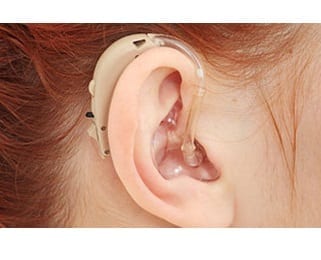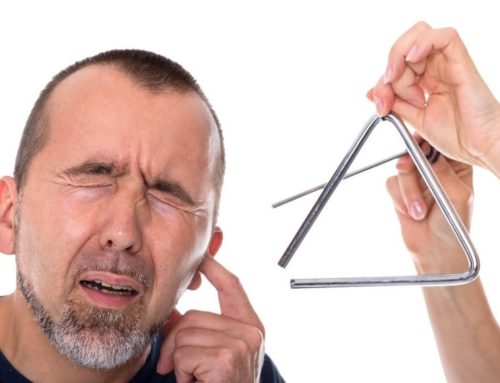
Well… “Do you need hearing aids?”
Hearing loss is common
Many people wear hearing aids
Have you noticed them?
Hearing aids have changed significantly over the last few years and continue to improve at a brisk rate. Like phones, computers and tablets, hearing aids are mini computers that are processing more and more information. Every year or two each of the larger manufacturers brings out new and improved products.
Manufacturers often release the higher end products first, then gradually they release the mid-range and value products. The advantage of this is that there are excellent hearing aids in every technology range and they are continually improving. What great news this is for people with hearing loss, because hearing aids are not only effective at helping you communicate understand conversation in your everyday life, they look good too!




These images show how hearing aids have changed as much as computers, in fact, each hearing aid is a tiny computer. Current hearing aids have sophisticated sound processing, connectivity to your phone and other devices and rechargeability among many of the features.
How will hearing aids help me?
Simply – Hearing aids provide audibility for the sounds that you have been missing
Hearing the sentence correctly the first time means that you will (most likely)* say goodbye to:
- Auditory fatigue (less mental gymnastics to work out what was said).
- Having to ask for repeats.
- Embarrassment from getting something wrong.
After wearing hearing aids for a while, you will notice you are more relaxed and confident in social situations and general conversation:
- More confidence – in yourself as you are sure you are responding correctly
- More interest – in being involved in social events, as you are confident to join in
- More relaxed – as you will no longer need to be on hyper-alert; you know you will hear things around you – like the doorbell, the phone ring or people walking up from behind
*Most likely – because this is hearing loss dependent. People with severe/profound hearing losses or very poor speech discrimination may not receive all of these improvements. If we think this may affect you, will discuss it in detail before choosing hearing aids. The most significant changes happen for people who wear their hearing aids all the time.
Detect sound with your ears
Our ears are designed to collect sound from the environment and amplify it to a level where it can be delivered, via nerves, to the hearing centre in our brain (auditory cortex). The brain uses the electrical signal to recognise the sound from the environment and understand speech.
Hearing loss means the ears are damaged in some way. In most cases, just increasing the volume of the sound to our ears is not helpful to improve hearing clarity.
Hearing aids are small computers that often work together to optimise the signal received by the brain. They are continuously measuring the sound environment and adjusting the way they amplify to maximise hearing comfort and speech understanding and to reduce listening effort.
Higher level hearing aids have more automatic features to modify the sound to help you hear easier and with less effort.
Hear with your brain

Use it or lose it
Wearing hearing aids more strengthens the auditory system by giving it more practice with listening to various sounds and helping it relearn/learn which sounds are important and which sounds are not.
The ability to understand speech, especially in noisy environments usually improves with increased wearing time.
Regular hearing aid use will help your brain “hear better”
Interpreting sound information requires regular exposure. People who wear their hearing aids “only sometimes” are giving their brain two signals, hearing and not hearing, some sounds.
Their brain does not have as much practice interpreting the sound information and will not be able to use the information so well.
The ability to understand speech reduces over time – especially with a significant hearing loss
When there is hearing loss, the brain is not receiving the signal for all the sounds in the area of hearing loss. As this continues for many years, the brain does not have practice using the sound message and becomes less capable of managing the auditory information. It may even relocate those brain resources to another function (typically the visual system). The sooner you get hearing aids, the sooner you are providing your hearing system with sound and keeping it active.
“I notice an improvement in my client’s ability to repeat back single words, in quiet, with regular hearing aid use.
This effect is most potent for people with more severe hearing losses, who have waited a long time to get hearing aids.
Maree O’Sullivan (Audiologist)
A bit about Hearing Aids
Hearing aids have a lot of technology innovations working together to bring about the outcome of “simply” hearing. Below is a brief description for some of this functionality. There are 9 hearing aid brands that are approved by the Ministry of Health in New Zealand. Each brand has “speciality features” and often they use different terms for some of these:
Programmed for you
All hearing aids (supplied by a qualified professional) are programmed and then fine-tuned specifically for you. Your hearing test (Audiogram) is used to calculate the right amount of sound specifically for your hearing levels.
Adjust to your listening environment
Hearing aids do not amplify all sounds equally; they amplify quiet sounds more than loud sounds; this allows as many sounds as possible to be both audible and comfortable. Hearing aids are not just turning up the volume.
Directional microphones
Directional microphones help you to focus on the sounds in front of you and give less emphasis to sounds behind, these are helpful in background noise environments and are a standard feature in most hearing aids.
Feedback cancellation
Feedback cancellation makes sure that the hearing aids do not feedback (make a loud high-frequency sound). This can happen if the sound from the “loud-speaker” reaches the microphone.
Noise reduction
Noise reduction is a feature in most hearing aids, the way it works varies between brands. Most hearing aids focus more on speech sounds and reduce the loudness on non-speech sounds. Noise reduction also helps you to have a more comfortable listening experience.
Physical comfort
Current technology hearing aids are light and comfortable in your ears.
Cosmetics
Hearing aids no longer look like a medical device. Now they are a piece of technology like a computer or smartphone.
Hearing aids style
Below are examples of the receiver in the canal type technology for some of the brands. There are many other styles of hearing aid as well. The choice of hearing aid style will depend on preference and degree of hearing loss.
Connectivity
Hearing aids can connect to other devices like a phone, TV or remote microphone to take the sound from these devices directly to your hearing aids.
There are many other hearing aid features available from various suppliers, for example, waterproof hearing aids, personalisation, stereo sound and more.
Current hearing aids look like this
Here are examples of the receiver in the canal type technology from some of the brands. As you can see, the terminology used to describe this style varies between manufacturers.
The picture below shows the different styles of hearing aids that are available. The choice of style will depend on your preference and degree of hearing loss.
-

Bernafon Zerena hearing aids -

Oticon opn -

Phonak rechargeable hearing aids -

ReSound Linx Quattro hearing aids -

Signia Silk Nx hearing aids -

Starkey Muse IQ -

Unitron Moxi Kiss -

Widex evoke hearing aids


There are many technologies available now that connect up with your hearing aids. They connect to your phone
(landline or mobile), TV, computer, MP3 player and stereo. You can also get remote microphone technology, where you can give the speaker a microphone or place it on the other end of the table, then hear the conversation directly into your hearing aids.
Watch this video for example of how technology can work with hearing aids.
What is the right solution for me?
Once you have decided to improve your hearing, we will look in depth at your lifestyle and listening needs to make sure we get the best solution for you. The best solution for you may not be hearing aids. We will let you know all the options then you can choose what you think will work best. We will ask you questions about your lifestyle and listening needs, then match the best technology (or other option) for your situation. Learn more about the process of getting hearing aids here.





